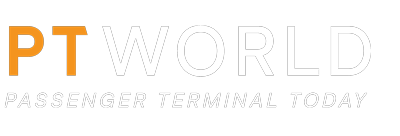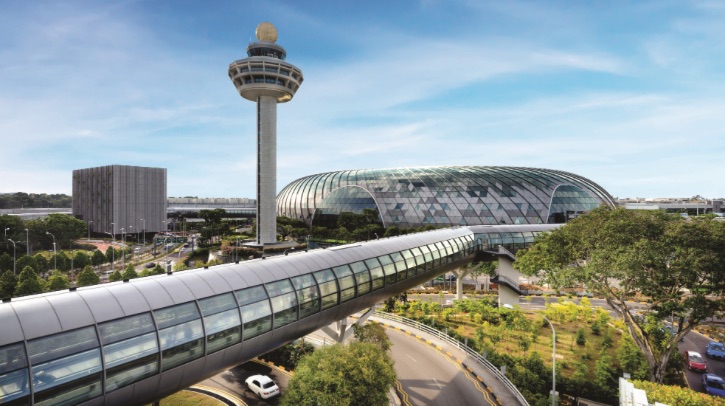PTT speaks with Alan Xavier Tan, senior vice president of aerodrome safety and aviation security at Changi Airport Group, to find out more about the insights he plans to share at the ‘Insider threat – best practices, new measures’ panel discussion at Passenger Terminal Conference 2025, which is being held in Madrid, Spain, on April 8, 9 and 10, 2025.
What is your panel about?

This panel will give focus on insider threats in the aviation industry. Airport staff are given access to restricted areas in the airport and are familiar with security processes. How can we identify insider threats and what measures could we put in place to prevent, detect, and mitigate such threats?
What are some of the biggest risks posed by insider threats at airports?
For a start, let’s focus on insiders as staff who are familiar with the airport systems and processes, and are not your trained perpetrators. Looking at reported security incidents at airports around the world, most incidents by insiders are largely related to criminal activities like smuggling and pilferages or took place due to negligence or carelessness. Many of these security incidents were opportunistic as airport security systems and processes made it difficult to carry out such criminal activities. In other less serious situations, there are also opportunities for such insiders to try and circumvent airport security processes, e.g., using their airport access to facilitate activities in the restricted areas that are not work related.
What technologies or strategies are proving most effective in mitigating insider threats?
It is not easy to identify a member of staff who has gone rogue or conducts criminal activities. Some do it out of greed, some do it out of desperation, e.g. sudden financial difficulties. Therefore, regular background screening is important as it updates the risk profile of individuals who have been granted access to the airport restricted areas.
Staff in higher risk work areas should also frequently update their personal credit credentials so that vulnerabilities associated with financial challenges can be identified. Other programs such as whistleblowing and confidential reporting are also important to encourage staff to report suspicious activities.
Such confidential channels are important as it is not easy to report against someone you work with. To reduce staff vulnerabilities, support programs such as financial assistance and emotional care programs are also useful avenues to address the problems early. Finally, visible security measures and consistent messaging to staff to keep to the expected conduct required in the airport restricted area are also important deterrents.
How can airports effectively balance security measures with operational efficiency?
Security measures are designed to identify and detect specific threats at different stages of the traveler’s journey and flight operations. It is important to understand the flow of the process and identify the load for each of the operations so that careful planning can be conducted. Sufficient capacity and resources should be allocated where possible.
However, very often the increase in travel demand outstrips the original planned capacity. This is where flexibility in operations should provide avenues to improve operational efficiency. For instance, at the checkpoint, load balancing with the appropriate resources at the different stages of divestment – x-ray screening, physical search, bag search – can help keep the lanes moving more smoothly. There are many different ways to achieve this as every flight is different.
What are some of the biggest challenges facing airport security teams around the world today?
Flight and passenger traffic are increasing. This puts tremendous pressure on security staff. Checkpoints are consistently busy, and passengers are carrying more items during their flights, which makes screening more difficult. Furthermore, the ability to recruit and retain security staff remains challenging, Security standards are also increasing, which inadvertently introduced added processes at times at the checkpoint. All these compounded into other issues of increasing cost of security operations over time.
What technologies or strategies are proving most effective in this sector? Can you provide any examples of recent systems that have been well-designed for key user requirements?
There is no panacea here. Each technology has its advantages and yet brings along different operational requirements. In recent years, the use of body scanners or AIT has helped to reduce the need for physical search of passengers, but this correspondingly demanded more divestment of personal items from the passengers, which takes more time at the divestment station.
The use of computed tomography (CT) technologies at the checkpoint has potential to improve security outcomes and improve passenger experience as there is less need for divestment. The CT technology also enabled algorithm-based detection of specific threats. However, alarm rates, longer scan time per bags and more complex image analysis lengthen the time of the x-ray screening operations. Therefore, checkpoint using such CT technologies must deploy a tray return system and re-balance the load of the various stages. We are now looking at AI to help us speed up image analysis and speed up the x-ray screening operations, with better detection and lower false alarms.
To hear more valuable industry insights from top aviation executives, book a conference pass for Passenger Terminal Conference, taking place on April 8, 9 & 10, 2025, in Madrid, Spain.


